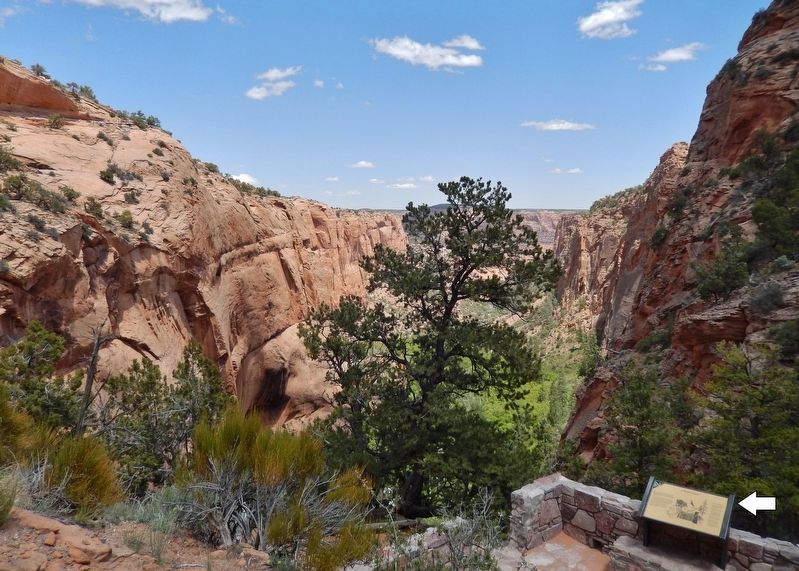6 entries match your criteria.
Related Historical Markers
Aspen Forest Overlook Trail, Navajo National Monument

By Cosmos Mariner, May 24, 2016
A Relict Forest Marker • wide view
(Betatakin Canyon in background)
SHOWN IN SOURCE-SPECIFIED ORDER
| | Before you lies a small tributary of the Tsegi Canyon watershed. A quaking aspen grove graces the canyon floor, while the north-facing cliff (right) offers shady habitat for towering Douglas-fir trees.
Thriving here in this desert wilderness is . . . — — Map (db m144450) HM |
| | When protected from overgrazing, this bunchgrass thrives on the high desert. It was once a nutritious food source for the Hopi Indians.
While Navajos also depended on rice grass, other foods that were easier to prepare eventually replaced it. . . . — — Map (db m144391) HM |
| | Hopi Indians burn rabbit brush kindling with three other wood fuels in their ceremonial kivas. Slender, flexible stems are woven into basketry. Green dye comes from the inner bark, while early autumn flowers yield a yellow dye. The Hopis once . . . — — Map (db m144448) HM |
| | Serviceberry is one of the enduring "life medicines" of the Navajos, which insure their survival, health, and harmony. It is gathered to treat nausea, stomach problems, animal bites, and recovery from childbirth. It is also valued as a medicine in . . . — — Map (db m144449) HM |
| | The most common oak in Navajoland has a hard, durable wood, which is still used for ax handles, weaving battens, and cradleboard hoops. The leafy branches are favored for shade ramadas in the summer. Solutions of root bark are used to dye wool and . . . — — Map (db m144405) HM |
| | Generations of Hopis have long travelled far from their arid, mesa-top homes to collect fir boughs and branches. Navajos also traded cut boughs to the Hopis in exchange for corn. Each culture requires fir neck-wreaths for the dancers of certain . . . — — Map (db m144406) HM |
Apr. 26, 2024
